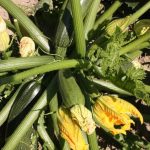Bone meal, a natural fertilizer made from ground animal bones, is widely used in gardening for its nutrient-rich composition. In this article, we explore the benefits of bone meal for plants and specifically whether it is good for vegetable gardens.
Understanding the nutritional content of bone meal will shed light on its potential advantages, such as enhancing soil fertility and promoting root development. Additionally, we address concerns and provide alternatives to bone meal, ensuring that gardeners can make informed decisions about their vegetable gardens.
Bone meal consists of ground-up animal bones that have been processed into a fine powder. Rich in essential nutrients like phosphorus and calcium, bone meal acts as an organic fertilizer, providing plants with the minerals they need to thrive. By incorporating bone meal into the soil, vegetable gardens can benefit from improved plant growth and overall health.
When it comes to vegetable gardens specifically, bone meal plays a crucial role in supplying key nutrients necessary for abundant yields. Vegetables require ample amounts of phosphorus for healthy root development and strong fruit production. Calcium, another important nutrient found in bone meal, helps prevent diseases like blossom end rot in tomatoes and peppers.
But is bone meal truly good for vegetable gardens? That’s what we aim to uncover in this article by examining its nutritional content, understanding its benefits for plants, exploring potential concerns or drawbacks associated with its usage, and providing alternative organic fertilizers or soil amendments.
By delving deeper into these aspects of bone meal application in vegetable gardens, readers will be equipped with the knowledge needed to make informed decisions about their gardening practices. So let’s dive into the world of bone meal and explore its potential to transform your vegetable garden into an abundant oasis.
Understanding the Nutritional Content of Bone Meal
Bone meal is a popular organic fertilizer that has been used by gardeners for centuries. It is made from finely ground animal bones and contains a variety of essential nutrients that are beneficial for plant growth. In this section, we will take a closer look at the nutritional content of bone meal and how these nutrients benefit plants, with a specific focus on vegetable gardens.
The Essential Nutrients Found in Bone Meal
Bone meal is rich in several key nutrients that plants need to thrive. One of the primary components of bone meal is phosphorus, which plays a vital role in root development and overall plant growth. Phosphorus stimulates strong root development, allowing plants to better access water and nutrients from the soil. This nutrient is especially important for vegetable gardens as it helps promote healthy fruit or vegetable production.
Apart from phosphorus, bone meal also contains calcium, another essential nutrient for plants. Calcium plays a crucial role in cell wall formation and protecting against diseases and disorders such as blossom end rot in tomatoes. Additionally, bone meal provides trace amounts of other minerals like nitrogen, potassium, and magnesium that are necessary for optimum plant health.
How These Nutrients Benefit Plants
The nutrients found in bone meal have various benefits for plant growth and development. Phosphorus aids in the transfer of energy within the plant, making it crucial for photosynthesis and respiration processes. It also promotes flower formation and enhances overall fruiting capacity.
Calcium improves cell integrity by supporting strong cell walls, making plants less susceptible to disease and environmental stresses. It also helps regulate the movement of water within the plant, ensuring efficient nutrient uptake.
In vegetable gardens specifically, these nutrients are particularly valuable. The high levels of phosphorus in bone meal can contribute to healthy root crops such as carrots or beets by promoting robust root development and increased tuber production. Moreover, vegetables like tomatoes, peppers, and squash that rely on calcium for proper fruit development and disease prevention can benefit greatly from the addition of bone meal.
Understanding the nutritional content of bone meal and how these nutrients benefit plants underscores its value as a fertilizer in vegetable gardens. In the next section, we will explore the advantages of using bone meal in more detail to further highlight its benefits for vegetable gardening.
The Pros of Using Bone Meal in Vegetable Gardens
Bone meal, a popular organic fertilizer, offers several advantages when used in vegetable gardens. One of the main benefits is its ability to improve soil fertility and structure. Bone meal is composed of finely ground animal bones that are high in phosphorus and calcium, two essential nutrients for plant growth. These nutrients help promote healthy root development, enhance overall plant growth, and increase the yield of vegetables.
Phosphorus is particularly important for vegetable plants as it plays a crucial role in their energy production and nutrient uptake. With an adequate supply of phosphorus from bone meal, vegetables are better equipped to develop strong roots and efficiently absorb nutrients from the soil. This ultimately leads to healthier plants with increased resistance to diseases and pests.
In addition to improving soil fertility, bone meal also helps enhance soil structure. The calcium content in bone meal aids in the formation of stable soil aggregates and improves drainage. By creating a well-structured soil environment, bone meal promotes optimal root penetration, water retention, and nutrient availability for vegetables.
| Nutrient | Role |
|---|---|
| Phosphorus | Promotes healthy root development and nutrient uptake |
| Calcium | Aids in the formation of stable soil aggregates and improves drainage |
When using bone meal in vegetable gardens, it is important to apply it correctly according to dosages and guidelines specific to different types of vegetables. Applying excessive amounts or improper application methods can lead to phosphorus imbalances or other issues such as stunted growth or nutrient deficiencies. To avoid these risks, gardeners should follow recommended usage instructions provided by manufacturers or consult with horticultural experts.
Overall, bone meal can be a beneficial addition to vegetable gardens due to its ability to improve soil fertility, enhance root development, and promote overall plant growth. However, it is essential to use bone meal responsibly and in moderation to avoid any potential negative effects. Gardeners are encouraged to consider the specific needs of their vegetables and seek professional advice when incorporating bone meal into their gardening practices.
Bone Meal Application
When it comes to using bone meal in vegetable gardens, proper application is crucial for optimal results. Incorrect usage can lead to nutrient imbalances or potential risks for your plants. Here are some dos and don’ts to keep in mind when applying bone meal:
Dos:
- Prepare the soil: Before applying bone meal, ensure that the soil is well-prepared. Till the area to a depth of 8-12 inches and remove any weeds or debris. This will create an ideal environment for nutrient absorption.
- Follow recommended dosage: Different types of vegetables have different nutrient requirements, so it’s essential to follow the recommended dosage of bone meal accordingly. Overuse can result in excessive phosphorus levels, which can be detrimental to plants.
- Incorporate into the planting hole: When transplanting seedlings or setting up new vegetable beds, sprinkle the recommended amount of bone meal into each planting hole. Mix it with the soil before placing the plant in the hole.
- Apply during early stages: Bone meal is most effective when applied during the early stages of plant growth, as this is when root development is crucial. Sprinkle a thin layer around established plants, making sure to avoid direct contact with stems or leaves.
Don’ts:
- Excessive application: Avoid going overboard with applying bone meal as it can cause phosphorus build-up in the soil, leading to nutrient imbalances. Stick to recommended dosages for optimal results.
- Direct contact with plant parts: Prevent bone meal from coming into direct contact with plant stems or leaves, as this may cause burning or damage to delicate tissues.
- Mix with other fertilizers carefully: While combining fertilizers might seem like a good idea, be cautious when mixing bone meal with other amendments or fertilizers containing high levels of nutrients like nitrogen or potassium. Improper combinations may lead to imbalances and negative effects on plant growth.
By following these dos and don’ts, you can ensure that your bone meal application is done correctly, maximizing the benefits for your vegetable garden without any adverse effects.
Addressing Potential Concerns
When considering the use of bone meal in vegetable gardens, it is important to address any potential concerns or drawbacks that may arise. While bone meal can provide valuable nutrients and benefits to plants, there are a few considerations to keep in mind.
One potential concern when using bone meal is the possibility of excess phosphorus in the soil. Bone meal is known for its high phosphorus content, which can be beneficial for root development and flowering. However, an excess amount of phosphorus can lead to nutrient imbalances and environmental issues. This is particularly important for vegetable gardens, as vegetables have specific nutrient requirements.
To counterbalance any potential imbalances caused by bone meal, it is recommended to regularly test the soil pH and nutrient levels. This will help ensure that the nutrients provided by the bone meal are being properly utilized by the plants without causing any harm. Additionally, incorporating other organic fertilizers or amendments that are lower in phosphorus can help maintain a balanced nutrient profile in the soil.
Overall, when using bone meal in vegetable gardens, it is crucial to use it responsibly and in moderation. Following dosage guidelines and testing the soil regularly will help prevent any potential negative effects and ensure that plants receive adequate nutrition from all essential nutrients.
| Concern | Solution |
|---|---|
| Excess phosphorus | Regularly test soil pH and nutrient levels; incorporate other organic fertilizers with balanced nutrient profiles |
| Potential nutrient imbalances | Monitor plant health and growth; adjust fertilizer application accordingly; regularly test soil nutrient levels |
| Environmental impact | Use bone meal responsibly and in moderation; follow dosage guidelines; avoid over-application |
Alternatives to Bone Meal in Vegetable Gardens
When it comes to providing nutrients for vegetable gardens, bone meal is not the only option available. There are several other organic fertilizers and soil amendments that can be used as alternatives to bone meal. Each alternative has its own set of advantages and disadvantages, allowing gardeners to choose the option that best suits their gardening preferences and needs.
One popular alternative to bone meal is fish meal. Fish meal is created by grinding up whole fish or fish remains, and it is known for its high nitrogen content. This makes it a great choice for leafy green vegetables like lettuce and spinach, which require ample nitrogen for healthy growth. In addition to nitrogen, fish meal also contains significant amounts of phosphorus and potassium, making it a well-rounded organic fertilizer option.
Another alternative to bone meal is kelp meal. Kelp meal is made from dried seaweed and provides a wide range of nutrients necessary for plant growth. It contains trace minerals such as iodine, iron, and magnesium, which are essential for overall plant health. Kelp meal also improves soil structure and promotes beneficial microbial activity in the soil. It can be particularly beneficial for vegetables that are prone to nutrient deficiencies or those grown in sandy soils.
For gardeners who prefer not to use animal-based products, there are several plant-based alternatives available as well. Composted manure, such as cow manure or chicken manure, can provide a rich source of organic matter along with important nutrients like nitrogen, phosphorus, and potassium. Compost made from kitchen scraps or yard waste can also be a viable option for vegetable gardens as it enriches the soil with organic matter while releasing slow-release nutrients over time.
Ultimately, the choice between bone meal and its alternatives depends on factors such as individual preferences, specific nutrient requirements of the plants being grown, and availability of resources. It’s important for gardeners to research each option carefully before making a decision. Experimenting with different alternatives and finding the best fit for one’s garden can lead to thriving vegetable plants and bountiful harvests.
Expert Tips and Recommendations
Benefits of Expert Tips and Recommendations
Expert tips and recommendations can be invaluable for vegetable gardeners, especially when it comes to the use of bone meal. With their extensive knowledge and experience in horticulture or organic gardening, experts can provide valuable insights and recommendations that can help gardeners maximize the benefits of using bone meal in their vegetable gardens. Their tips can range from specific dosages and application methods to other considerations that may affect the overall success of the garden.
Interview with a Horticulture Expert
In an interview with Dr. Jane Green, a renowned horticulture expert, she shared her insights on the usage of bone meal in vegetable gardens. According to Dr. Green, bone meal is an excellent source of phosphorus, which is crucial for root development and overall plant growth. She emphasized that this nutrient is particularly important for vegetables as they require higher levels of phosphorus compared to other crops.
Dr. Green also emphasized the importance of applying bone meal at the right time during the growing season. She recommended mixing bone meal into the soil before planting or transplanting seedlings to ensure adequate phosphorus availability throughout the growing period. Additionally, she cautioned against overusing bone meal, as excessive phosphorus levels could have detrimental effects on plant health.
Community Insights
To gather more perspectives on using bone meal in vegetable gardens, we reached out to members of an online gardening community. Many experienced gardeners shared their positive experiences with bone meal, noting increased yields and healthier plants when compared to not using it. They also stressed the importance of following dosage recommendations and guidelines provided by experts.
Some community members suggested incorporating bone meal into compost piles before spreading it onto beds, while others recommended top-dressing existing plants with a thin layer of bone meal during mid-season. These real-life examples further support Dr. Green’s recommendation of proper application timing and dosage.
Overall, the expert tips and recommendations, along with insights from seasoned gardeners, affirm the benefits of using bone meal in vegetable gardens. However, it is crucial for gardeners to consider their specific plant needs and soil conditions before incorporating bone meal into their gardening routine.
Real-Life Examples and Success Stories
Testimonial from Vegetable Gardener A
“I have been using bone meal in my vegetable garden for years, and I can confidently say that it has made a significant difference in the health and productivity of my plants. Before using bone meal, I struggled with poor soil fertility and lackluster yields. However, after incorporating bone meal into my garden routine, I saw a noticeable improvement in the overall growth and vitality of my vegetables.
One particular success story involves my tomato plants. In previous years, they would often suffer from blossom end rot, resulting in spoiled fruits. However, after adding bone meal to the soil before planting, I noticed a decrease in blossom end rot cases. The tomatoes produced were larger, juicier, and had better flavor.
I believe that the high phosphorus content of bone meal played a crucial role in enhancing root development and strengthening the plants’ ability to take up nutrients. This not only resulted in healthier plants but also allowed them to withstand diseases and environmental stresses more effectively”.
Testimonial from Vegetable Gardener B
“Bone meal has been an essential part of my vegetable gardening journey since I started growing my own food. As an organic gardener, finding natural fertilizers that provide essential nutrients without harmful chemicals is crucial for me.
When it comes to growing leafy greens such as spinach and kale, bone meal has truly made a difference. These vegetables require nitrogen for lush green foliage growth, and bone meal supplies this nutrient while also contributing phosphorus for strong root development.
After incorporating bone meal into the soil at planting time and as a side dressing during the growing season, I observed vigorous leafy growth with vibrant colors on my greens. The leaves were tender yet robust, making them perfect additions to salads or sautés”.
Testimonial from Vegetable Gardener C
“I started using bone meal in my vegetable garden after facing challenges with poor soil quality and slow plant growth. I specifically wanted to increase the nutrient content in my garden beds without relying on synthetic fertilizers.
One of the crops that significantly benefited from bone meal was my broccoli. The high phosphorus levels in bone meal promoted robust root development, allowing the plants to establish quickly. This resulted in strong stalks and large heads of broccoli.
Furthermore, I noticed an improvement in overall plant vigor and pest resistance. The added nutrients provided by bone meal helped create a balanced ecosystem within the soil, supporting beneficial microorganisms and creating an environment that discouraged pests.
Using bone meal has been a game-changer for me, enhancing both the quality and quantity of vegetables I can harvest from my garden”.
Conclusion
In conclusion, bone meal can be a beneficial addition to vegetable gardens. Its high nutritional content, including essential nutrients such as phosphorus and calcium, provides numerous benefits for plant growth and development. These nutrients are particularly important for vegetable gardens as they support healthy root development and overall plant growth.
Using bone meal in vegetable gardens can improve soil fertility and structure. It helps to enrich the soil with essential minerals, promoting nutrient uptake by plants. Additionally, bone meal aids in enhancing root development, which is crucial for the establishment of healthy plants. With stronger roots, plants are better able to absorb water and nutrients from the soil, leading to improved growth and higher yields.
However, it is important to use bone meal correctly and in moderation. Overuse or improper application of bone meal can lead to an imbalance of nutrients in the soil, particularly an excess of phosphorus. This can negatively impact plant health and may even result in nutrient deficiencies. It is crucial to follow dosage guidelines and apply bone meal based on the specific needs of each vegetable plant.
Despite potential concerns, many vegetable gardeners have experienced success using bone meal in their gardens. The benefits of bone meal have been demonstrated through impressive yields and thriving plants. Therefore, if you are looking to enhance the health and productivity of your vegetable garden, it may be worth considering incorporating bone meal into your gardening routine.
Frequently Asked Questions
Which vegetable plants like bone meal?
Many vegetable plants benefit from the addition of bone meal in the garden. Plants that have high phosphorus requirements, such as tomatoes, peppers, and root vegetables like carrots and potatoes, particularly appreciate the use of bone meal.
These vegetables rely on phosphorus for healthy root development and overall growth. Additional plants that tend to respond well to bone meal include brassicas like broccoli and cabbage, as well as leafy greens like spinach and lettuce.
How do you use bone meal in vegetable garden?
Bone meal can be used in the vegetable garden for a variety of purposes. One common way to use it is during planting by mixing a small amount of bone meal with the soil in each planting hole or trench. This helps provide an immediate source of phosphorus to the young plants’ roots as they establish themselves.
Another method is applying bone meal as a side dressing or top-dressing around established plants during their growing season. By sprinkling a thin layer of bone meal around the base of the plants and gently working it into the soil surface, you can provide a slow-release source of phosphorus over time.
When should I add bone meal to my garden?
The timing for adding bone meal to your garden largely depends on the specific needs of your plants and the soil conditions. In general, it’s best to add bone meal before or during the initial stages of plant growth when root development is crucial. Incorporate bone meal into your garden soil before planting to ensure its nutrients are readily available to young seedlings or transplanting starts.
Additionally, if you notice signs of nutrient deficiencies in your vegetable plants as they grow, such as stunted growth or yellowing leaves indicating low phosphorus levels, adding some bone meal at that point can help correct these issues effectively. Remember to follow package instructions regarding application rates and frequency for best results.

If you’re looking to get into vegetable gardening, or are just looking for some tips on how to make your current garden better, then you’ve come to the right place! My name is Ethel and I have been gardening for years. In this blog, I’m going to share with you some of my best tips on how to create a successful vegetable garden.





